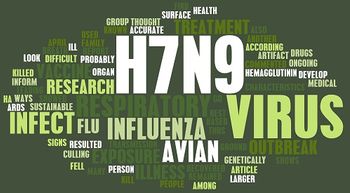
The 2016-2017 influenza season continues to see a growing number of severe flu cases due to the increased prevalence of influenza A (H3N2) virus.

The 2016-2017 influenza season continues to see a growing number of severe flu cases due to the increased prevalence of influenza A (H3N2) virus.

Researchers at Southern Research Institute are focusing their efforts on finding a broad-spectrum antiviral drug that will be effective against a number of influenza strains.

The H3N2 strain of influenza continues to circulate throughout Calgary, as well as in the South Zone, while “little influenza activity in the North Zone [has been observed] to date.”

Researchers have found no link between an influenza infection during pregnancy and an increased risk of an autism spectrum disorder diagnosis.

Researchers have conducted a study looking into the role that vitamin D might play in reducing the number of acute respiratory infections that are experienced by older adults residing in long-term care facilities.

Dutch scientists have identified the best conditions for Legionella growth: conditions that support biofilm growth.

Researchers have found potential evidence that suggests Ebola may be able to replicate in the lungs of recovering patients.

Researchers uncover high rates of co-infections in patients who are admitted to hospitals with influenza.

New surveillance reports from the Centers for Disease Control and Prevention (CDC) show that this year’s influenza vaccine can offer effective protection against circulating viruses this flu season.

Your cash is probably dirtier than you think, with the potential to serve as a vehicle for a number of harmful, disease-causing bacteria.


Low CD4/CDE8 ratio and a history of bacterial pneumonia heighten the risk for lung cancer in an HIV-positive population.


Health officials in China have reported six recent human cases of bird flu in three mainland provinces and the Macao Special Administrative Region; these cases have been traced back to live poultry markets and poultry farms.

Researchers continue to move closer to the development of a universal influenza vaccine that would potentially provide protection against all influenza A strains and subtypes.

Following a recent unanimous decision by United Nations General Assembly member states, the intergovernmental organization has announced it will be holding a high-level meeting in 2018 on the fight against tuberculosis (TB), the first-ever meeting of its kind.

Americans are gearing up for travel to celebrate the winter holidays amid a mild start to the influenza season.

An alternative antibiotic treatment regimen for multidrug-resistant tuberculosis (TB) endorsed by WHO shows promising effects in a new study using computer modeling.

Researchers find that the tuberculosis vaccine can offer protection against other diseases due to its “trained immunity.”

A defense mechanism by which plants and animals fight off RNA viruses was recently observed in human cells for the first time, offering researchers a look at new ways to treat viral diseases.

New guidelines released by researchers with the Infectious Diseases Society of America recommend that people with suspected latent tuberculosis infections receive a new generation of diagnostic testing.

A new study shows corticosteroids may be an effective tool in fighting tuberculosis with comorbid acute respiratory failure.

In honor of National Influenza Vaccination Week, the CDC reports on influenza vaccination coverage and the benefits of receiving a flu shot.

The CDC’s NCHS released its mortality report on life expectancy and leading causes of death for adults and infants in 2015.

Researchers discover a simple method for estimating fitness of antiviral-resistant influenza strains using surveillance data.